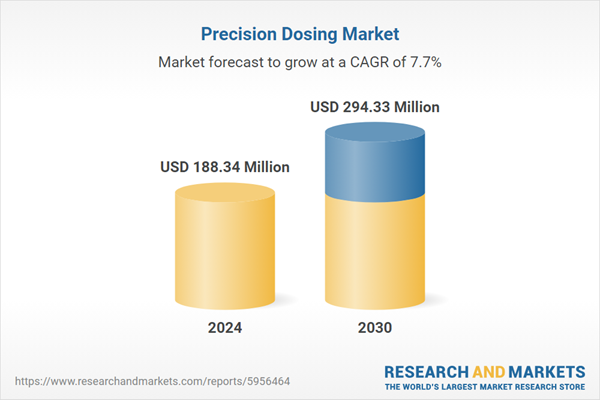Physiologically-Based Pharmacokinetic (PBPK) Modeling is the fastest growing segment, North America is the largest regional market
Speak directly to the analyst to clarify any post sales queries you may have.
10% Free customizationThis report comes with 10% free customization, enabling you to add data that meets your specific business needs.
Key Market Drivers
The Global Precision Dosing Market is significantly propelled by advancements in pharmacogenomics and genetic profiling. These scientific developments enable a more profound understanding of individual patient responses to medications by analyzing genetic variations that influence drug metabolism, efficacy, and safety. Such insights are fundamental to tailoring therapeutic regimens with unprecedented accuracy, moving away from generalized treatment protocols. For instance, in an article published in *The Pharmacogenomics Journal*, October 2024, a pharmacogenomics-enriched comprehensive medication management program was associated with 39% fewer inpatient and 39% fewer emergency department visits, highlighting the clinical utility and direct benefits of genetically guided dosing. This precision minimizes adverse drug reactions and optimizes therapeutic outcomes, fostering greater confidence in individualized treatments.Key Market Challenges
High initial capital expenditure presents a significant impediment to the expansion of the Global Precision Dosing Market. The substantial upfront investment required for advanced precision dosing systems directly limits their adoption, particularly among smaller enterprises or those operating with constrained capital budgets. This financial barrier delays the integration of such technologies, even when their long-term benefits in terms of efficiency and quality are evident.Key Market Trends
The strategic integration of artificial intelligence and machine learning into dosing protocols is a pivotal trend transforming the Global Precision Dosing Market. These advanced technologies enhance the accuracy and efficiency of drug administration by analyzing vast datasets to predict optimal dosages, identify patient-specific responses, and refine treatment regimens. According to the US Food and Drug Administration's (FDA) Division of Pharmaceutical Manufacturing Assessment III, in a June 2024 address, approximately 40% of companies are already utilizing AI in various capacities within pharmaceutical manufacturing, indicating a significant move towards intelligent systems for production and delivery. This adoption extends to precision dosing, where AI-driven models can continuously learn and adapt, leading to improved therapeutic outcomes.Key Market Players Profiled:
- InsightRX Inc.
- Tabula Rasa HealthCare, Inc.
- Healthware, Inc. (PrecisePK)
- Vesynta Limited
- Oxular Limited
- Accent Therapeutics, Inc.
- Rapport Therapeutics, Inc.
- HNP Mikrosysteme GmbH
- Fluid-O-Tech Srl
- Psycheceutical, Inc.
Report Scope:
In this report, the Global Precision Dosing Market has been segmented into the following categories:By Patient Type:
- Paediatrics
- Geriatrics
- Patients on Polypharmacy
- Patients with End Organ Dysfunction
- Others
By Tools:
- Physiologically Based Pharmacokinetic (PBPK) Modeling
- Non-Linear Mixed Effects (NLME) Modeling
By Software:
- Web-Based
- Desktop-Based
By Drug Class:
- Antibiotics
- Antimycotics
- Immunosuppressives
- Antiepileptics
- Antitumoral Drugs
- Antidepressants
- Others
By Region:
- North America
- Europe
- Asia-Pacific
- South America
- Middle East & Africa
Competitive Landscape
Company Profiles: Detailed analysis of the major companies present in the Global Precision Dosing Market.Available Customizations:
With the given market data, the publisher offers customizations according to a company's specific needs. The following customization options are available for the report.Company Information
- Detailed analysis and profiling of additional market players (up to five).
This product will be delivered within 1-3 business days.
Table of Contents
Companies Mentioned
The companies profiled in this Precision Dosing market report include:- InsightRX Inc.
- Tabula Rasa HealthCare, Inc.
- Healthware, Inc. (PrecisePK)
- Vesynta Limited
- Oxular Limited
- Accent Therapeutics, Inc.
- Rapport Therapeutics, Inc.
- HNP Mikrosysteme GmbH
- Fluid-O-Tech Srl
- Psycheceutical, Inc.
Table Information
| Report Attribute | Details |
|---|---|
| No. of Pages | 185 |
| Published | November 2025 |
| Forecast Period | 2024 - 2030 |
| Estimated Market Value ( USD | $ 188.34 Million |
| Forecasted Market Value ( USD | $ 294.33 Million |
| Compound Annual Growth Rate | 7.7% |
| Regions Covered | Global |
| No. of Companies Mentioned | 11 |









